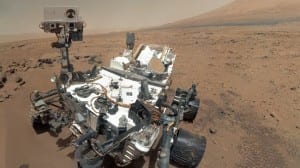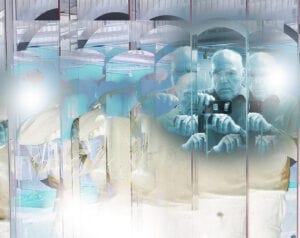Curiosity’s first year on Mars

The Mars Rover Curiosity launched Nov. 26, 2011 from Cape Canaveral, Florida. The mission of Curiosity is to explore Mount Sharp. Jeffery Moersch, Ph.D., a professor of geoscience in the UT Department of Earth and Planetary Sciences, spoke on Friday about the results from Curiosity’s first year on Mars.
Moersch said the purpose of this mission is beyond looking for water. Curiosity is looking for signs of sustained life on Mars. In order to complete this mission, Curiosity needed more tools, and this is why Curiosity is the size of a car.
Moersch works on a special part of the rover called DAN. DAN is a part of the rover that was developed by the Russians. DAN’s purpose is to look at neutrons that are present in the soil of Mars and to look for signs of life.
Curiosity spent time exploring areas of Mars that were near its landing site for several months and is now making its way to Mount Sharp.
During the first year of its mission, Curiosity explored an area called Glenelg. While exploring this area, Curiosity discovered underlying bedrock that was rounded. High radiation was also detected at this area. Curiosity also explored an area called Yellowknife Bay where it found a diversity of rock types.
Two months ago, Curiosity began its long trek to its destination, and along the way, DAN is looking at the neutrons in the soil. Moersch said that DAN has made a big discovery along the way and that the results of their findings will be available soon.
For more information, you can follow along at Curiosity’s website.
Edited by Nichole Stevens



